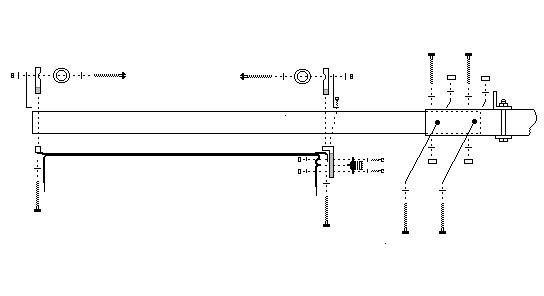About
Establish in 1999
Applying Critical Coupling to achieve Supergain
Probably the most familiar use of the term ‘critical coupling’ is normally applied to tuned LC circuits, and describes a condition in which 2 resonant inductors in close proximity will each develop equal amplitudes of current.
This same condition can occur between two parallel ½ wavelength (resonant) dipole elements as well, and can be achieved through several methods of coupling. i.e.; mutual inductance, capacitive coupling, physical coupling, or by a combination of these methods.
One popular method in use today uses capacitive coupling, where two parallel ½ wave dipoles (usually a driven element and a reflector element) are folded or bent in such a fashion that their tips come into close proximity to each other (forming a square or diamond shape). Another popular method is to feed two parallel ½ wave dipoles. Typically, the dipoles are spaced at 1/8 wavelength and fed with a phase difference of 135º. Attaining critical coupling using this method is certainly more difficult and if not properly designed, its performance is no greater than a two element log cell.
A yagi beam uses mutual inductance to achieve directional gain but, unfortunately, it is impractical to apply critical coupling methods to this design. When the driven element of a yagi is placed in close enough proximity to a parasitic element for the currents in both elements to become equal (or nearly equal), the spacing between them has become too close to develop good directional gain and will also suffer greatly in bandwidth. A practical two element yagi design will have unequal currents, a rather poor front-to back ratio, and a maximum directional gain of approximately 4.3 dBd (6.5 dBi) in free space.
The patented Critically Coupled bi-periodic method
This method is similar to the dual fed system mentioned previously except the element spacing is reduced to 1/10 wavelength, which is the optimum spacing for maximum mutual coupling gain, and critical coupling (equal currents) is achieved through the use of a coaxial delay line that is impedance matched to both elements. Unlike the aforementioned dual fed system, the rear element is not a typical “fed” element, rather, it is adjusted to have a negative impedance characteristic, so that any induced energy that has not been dissipated by radiation will flow back through the delay line into the feedpoint, reinforcing the current in the front driven element (similar to a feedback loop), thus satisfying both critical coupling and supergain conditions. The measured directional gain is 6.0 dBd (8.2 dBi) with a typical front-to-back ratio of around 30 dB.
Determining Supergain
To determine if an antenna is normal (gain) or if it falls into the supergain category, let the antenna be enclosed in the smallest sphere that just surrounds all of the antenna elements. The maximum gain that can be developed by an antenna operating in the normal range is:
Gnmax = (1*PI*A/Lam)2+ 4*PI*A/Lam
Where A is the radius of the enclosing sphere, and Lam is the wavelength. This equation is plotted in the graph shown to the right.
A 2 element yagi beam with its elements spaced at .1 wavelength occupies a radius essentially the same as a ½ wave dipole – a ¼ wavelength radius – so the maximum normal gain can be no greater than 7.4 dBi. Since the measured gain of the 2 element Raibeam using .1 wavelength element spacing is greater than 7.4 dBi it definitely falls into the supergain region.


